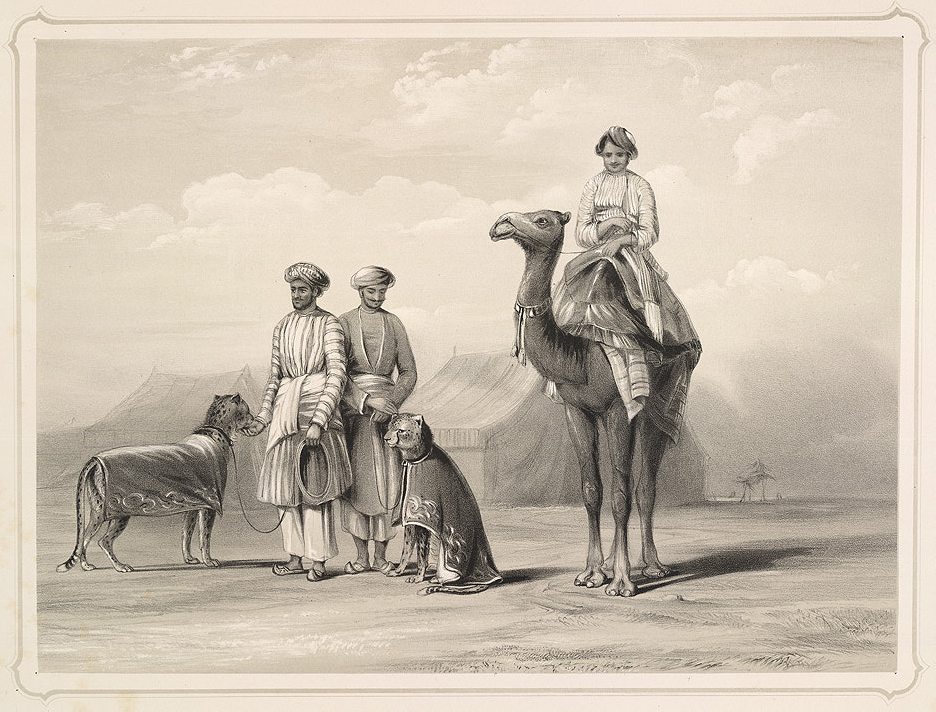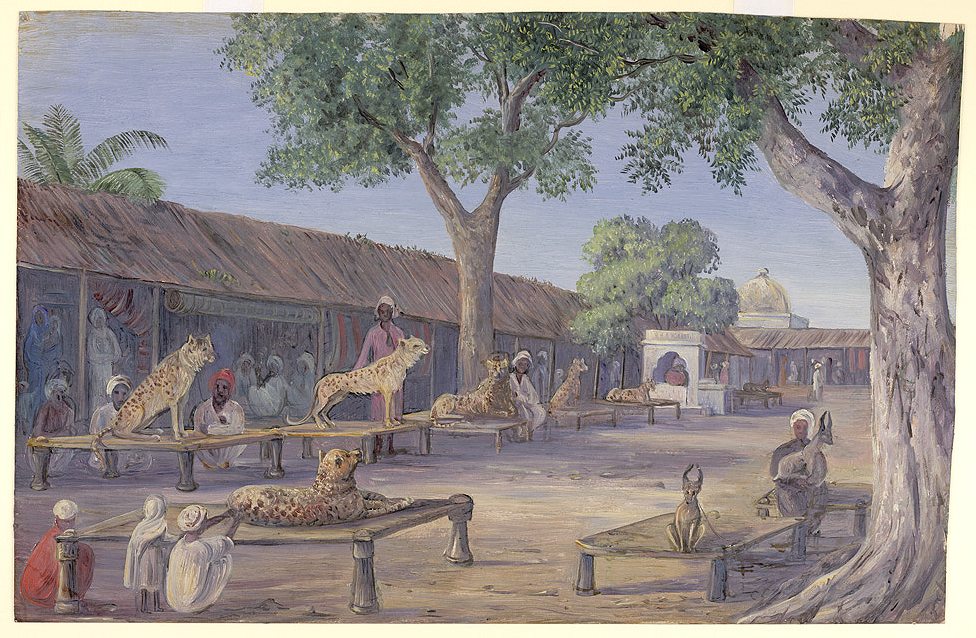India’s Pardhis are poor outcasts—and the country’s finest tiger hunters. Some are now helping authorities track down the poachers in their midst.
BHORAMDEO, India—
Rajesh was only 10 years old when he killed his first tiger, and 20 years later, he still remembers it vividly.
He was frightened. The tiger, a paw caught in a foot trap, was furious. The boy’s father said there wasn’t much time. First, Rajesh (a pseudonym) smashed the tiger’s head with a stick, but it remained conscious. Other hunters attacked the animal with thin spears as the boy stabbed through the tiger’s mouth down its throat. Then, piercing its ribs, he aimed for the heart.
Rajesh’s tribe, a sub-clan of the Pardhi tribe, hunted as their ancestors had—a dangerous but effective strategy refined and handed down over generations. Shooting drew too much attention, and bullet holes decreased the value of the hide. Poisoning, a cheap and easy method often used by villagers in retaliation for killed cattle, risked ruining the fur. Instead they used homemade spears and traps, forged by nomadic blacksmiths over campfires. The community took great pride in its quiet hunting techniques, for a Bengal tiger is no easy kill. An adult weighs between 240 to 500 pounds and measures 7 to 9 feet head to tail, one of the largest tiger subspecies in the world.

Outside India, the Pardhi community is virtually unknown. But almost all of India’s tigers are poached by its tribesmen: an anachronistic, nomadic people whose primary link to the 21st century is the mobile phones on which they call the middlemen of the international poaching syndicates. Although exotic animal parts have become a multi-billion-dollar global business, the first link of the chain remains desperately poor societal outcasts. Inside India, the Pardhi tribe has long been synonymous with criminality and lawlessness.
It wasn’t always the case. The Pardhi were once prized for their exceptional skills handling exotic wildlife and their knowledge of India’s jungles. During the Raj era, the Pardhis assisted in royal tiger hunts and trained the now extinct Asiatic cheetahs, which they kept as pets and hunting companions. Even their name is believed to stem from the Marathi word for hunting—paradh.

Today, hunting any animal is illegal in India and the Pardhis have been driven to a destitute existence on the fringes of society. Few options and lax enforcement of India’s wildlife protection laws and surging demand for animal parts in China have motivated some tribesmen to hold on to their traditions.
After Rajesh’s first kill, the tribe went to work on the carcass, quickly and systematically. Skinning is an art. If done too roughly, the hide’s value would decrease. Too slow and nearby villagers might hear. The children were warned to stay absolutely silent. The tribe tried to synchronize their excursions with the full moon to ensure they could see in the night.

The pelt was separated from the flesh—jaw to paws to tail—with thin saw blades, and the muscles cut loose from the bones. Doused in salt for preservation, the skeleton was wrapped in the skin and hidden under a tree for at least 24 hours. Meanwhile, Rajesh’s father dialed a number on his cellphone to arrange the sale—a rare interaction with the outside world. The parcel would sell for 42,000 to 50,000 Indian rupees (approximately $700 to $830), which would be divided between the clan members.
That night, they ate as much tiger meat as they could. Cooked in a curry, it was similar to mutton, only softer. For strength and stamina—according to the tribe’s superstitions—they started with the heart. Then the most tender parts—flank, ribs, and thighs. What the tribe couldn’t finish, they threw away. The kill would give them enough cash to eat for some time.
TODAY, MOST DEAD TIGERS END UP IN CHINA, BUT THE ROAD THERE IS LONG
Today, most dead tigers end up in China, but the road there is long. India itself has virtually no demand. After the Pardhi tribesmen kill the animal, Maoist guerillas, Nepali smugglers, and other middlemen transport various parts across the Himalayas or through Burma before reaching China, where they fetch astronomical prices due to the animal’s perceived benefits for health and virility. Entire skeletons soak in gigantic tanks to make tiger bone wine, believed to increase vitality, or qi. Skins become interior decorations and claws are made into lucky charms. Even the animal’s feces is used in Chinese traditional medicine.
Not all Pardhis poach, but virtually all tiger poaching in India involves Pardhis. Soft-spoken and shy, Rajesh doesn’t seem like a natural-born killer, but in a country where career paths are still often hereditary, hunting, he says, was in his blood. He has since quit, and agreed to tell his story on condition of strict anonymity; he still lives under the constant threat of reprisals from the clan he left behind.

Like many of the socioeconomic challenges facing India today, the Pardhis’ unfortunate situation is rooted in colonialism. The British outlawed Pardhis in the 1871 Criminal Tribes Act—effectively marking them as criminals as birth because of their caste. The measure sparked a witch hunt against the community that still lingers. Though the Pardhis were relieved of this label and elevated to “nomadic tribe” status in 1952, the stigma has yet to wash off.
“The level of disenfranchisement of the Pardhis, even in contemporary India, is dreadful,” says Gaurang R. Sahay, an expert on the Pardhis and an associate professor at Tata Institute of Social Sciences in Mumbai. Sahay notes that the group’s living conditions have not improved in line with those of other tribal communities, despite official attempts at affirmative action. “The government effort on this count is highly inadequate. That is why the Pardhis are still by and large extremely poor, illiterate, and marginalized.”
No one knows with certainty how many Pardhis exist today. Estimates tend to hover around 150,000 to 200,000, though this may be conservative. The majority of Pardhis live in central India, their ancestral home, but permanent settlements are still rare, mostly concentrated around national parks and forests. A growing number now dwell in Mumbai’s slums.
TIGERS’ SURVIVAL HINGES ON WHETHER HABITAT LOSSES AND RAMPANT POACHING CAN BE STOPPED
At the beginning of the 20th century, India had 40,000 tigers. Today, there are an estimated 3,200 wild tigers left in the entire world—more than half of them in India—and the species’ survival hinges on whether habitat losses and rampant poaching can be stopped.
The Indian government has invested more than $400 million in Protect Tiger, its flagship conservationist effort, since establishing it in 1973. But it’s uncertain how much impact the program has had. Even as the number of tigers in India seems to be slowly climbing, last year was the deadliest in seven years, according to Wildlife Protection Society of India (WPSI). An estimated 42 tigers were poached in India, many of them killed by Pardhis. “Members of Pardhi community are the major threat to the survival of tigers in the wild,” says Jose Louis, an expert at Wildlife Trust of India who specializes in trade control initiatives and works closely with poaching communities. “The organized trade in tiger and leopard parts is virtually handled by them at ground levels.”

Government efforts to improve the lives of the Pardhis is dismissed by experts as mostly cosmetic, creating a vicious circle in which some Pardhis see no other alternative to poaching. The Indian government has occasionally tried to appear tough on the poaching issue. In 2012, Maharashtra introduced a controversial law allowing forest rangers to shoot and kill suspected poachers with impunity, although this has yet to be done and the deterrent value remains questionable. At the same time, conservation efforts are frequently trumped by corporate interests: Near Rajesh’s home, mineral mines have already destroyed much of the region’s thick jungles.
Rajesh’s childhood was one lived on the run. His clan—15 to 20 families of about 40 hunters—traveled by train and bus. Whenever they spotted a promising hill or forest, they got off at a nearby station to see if it was a “tiger area.” The women sold forest goods while the men scanned the jungle for traces of tigers or leopards. From deer carcasses and pugmarks, they tried to determine the size and gender of the cats. Sometimes they heard or saw them. Sometimes they moved on after just a few days. Most nights they slept under trees.

Most Pardhis today work as low-paid day laborers in urban and rural areas. Some work as farmers and others hunt deer, wild pigs, and birds, selling meat and trapped pets at local markets. The tiger hunters are relatively few. Belinda Wright, executive director of WPSI, estimates that around 500 “hardcore” poachers have at some point been involved in big-cat poaching—a very small proportion. But those who do possess “phenomenal” knowledge of tiger and leopard behavior, Wright says.
While over 40 poachers were apprehended last year, experts say they are easily replaced. “There is good money involved,” Louis says. “They have the skills to hunt and chances of getting caught by authorities are very low. They all know that even if they get caught, they get bail after a few days. In short, this game is a low risk, high profit one.”
To battle tiger poaching, local organizations have circumvented India’s famed red tape by setting up their own schools and training programs, providing alternative livelihoods, and putting the Pardhis’ knowledge of wildlife to better use. The hunters’ unique understanding of animal habitat behavior, combined with their own tracking methods, make them more qualified for conservation work than most staff working in India’s national parks.
RAJESH STILL CAN’T VOTE AND HAS NO RECORD OF INDIAN CITIZENSHIP
In fact, the Pardhis could become instrumental for saving India’s tigers. Rajesh, the Pardhi former hunter, now guides an international wildlife organization through the jungles of central India that are among the country’s most promising tiger habitats. Approaching 30 years old, Rajesh still looks boyish, with bright white teeth and a childlike enthusiasm as he navigates the dense forest in bare feet. He recognizes the numbers on his cellphone only from their shape, and he can’t read the Hindi letters on his spotless white T-shirt. He has never been to school and is only just learning to write his own name. Even today, Rajesh is largely invisible to the state: After unsuccessfully applying for an ID card from the government, he still can’t vote and has no record of Indian citizenship.
Altogether, Rajesh has killed 25 to 30 tigers, the last one in 2007. Now he is hunting the hunters. His younger sister and brother, the only two of nine siblings who attended school, helped convince him of the error of his ways. They learned about the evils of poaching at school and convinced the rest of the family to quit. Rajesh’s parents became farmers and Rajesh and four of his siblings began offering tips to a global wildlife protection organization. He was offered amnesty for his past in return for insider knowledge of the poaching syndicates. Rajesh says he has secured the arrest of 20 to 30 Pardhis. He has cut ties with most members of his clan, who continue to poach, killing two to four tigers a year for the past decade in a designated reservation park. Rajesh now lives under a secret identity—the tribe has no tolerance for perceived traitors.
Still, Pardhis are often desperate for a normal, mainstream existence—a way out of a life of poaching and petty crime. The idea of a secure livelihood is a powerful incentive, says Chittaranjan David, of the World Wildlife Foundation India, who currently works with 18 Pardhi communities trying to promote the idea of pursing alternative livelihoods in Pardhi youth. “We need them to tell the others: There is someone who will support you if you settle down and give up your poaching,” David says. “You’ll have a good life, and you don’t have to commit crime again and again. You don’t have to run away continuously, because no one is hunting you.”
[Header image: Bengal tiger by Dreamstime.com]
